Test drive Honda Shuttle 1998 - 2001 Minivan
Driving Space Shattle
Mitsubishi-Pace WaGon Mitsubishi Space Wagon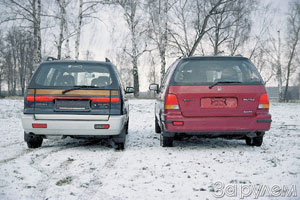 Mitsubishi Spaces WaGon for the Japanese market has been produced since 1983. The European debut took place in 1991. The car acquired the current type after modernization in 1994. The five -door wagon is equipped with gasoline engines - 1.8 and 2 liters (the latter with turbocharged and without) or 2 -liter turbodiesel. Gearboxes - five -speed mechanical or four -speed automatic. The drive is front or complete. Short -launched four -door modification is called Space Ranner.
Mitsubishi Spaces WaGon for the Japanese market has been produced since 1983. The European debut took place in 1991. The car acquired the current type after modernization in 1994. The five -door wagon is equipped with gasoline engines - 1.8 and 2 liters (the latter with turbocharged and without) or 2 -liter turbodiesel. Gearboxes - five -speed mechanical or four -speed automatic. The drive is front or complete. Short -launched four -door modification is called Space Ranner. Honda-Shattle Honda Shattle
Honda Shuttle (in the USA - Odysseus) debuted in 1994. It is produced only with a five-door body, 2.2-liter gasoline engine and a four-speed automatic gearbox. The drive is front or complete.
Here are two mini -wenes, both are Japanese, and even with the name close in meaning (which gave the reason to merge them in the title - a kind of cosmic shuttle!). Meanwhile, they belong to different generations, and the characters of cars are quite different.
Both cars are officially sold in Russia and cost, respectively, 32300 and 36,900 dollars.
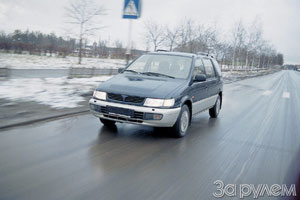 APPEARANCE
APPEARANCE Mitsubishi looks like a grown station wagon with a slightly shortened motor compartment. Honda makes a different impression. It is a little more, but this is a little enough to perceive it not as a passenger car, but something larger - however, without a hint of a chest. On the contrary, shuttle is surprisingly elegant.
DESIGN
Both cars have a steel body. At Mitsubishi under his bottom there are typically passenger spaces. But in Honda, these structural elements are so impressive that they are more like a high -grown frame. Yes, and the gas tank is protected by a powerful cross -member, as on an all -terrain vehicle.
The Japanese power units are deployed mirror: the engine is on the left, the box is on the right. Moreover, in Mitsubishi is a mechanical box, and on Honda there is an automatic machine. Incidentally, get to a deeply hidden oil felt probe, retaining clean cuffs, is not an easy task. Motor compartments from below are covered with longitudinal skis. However, on the sides of the protection, Mitsubishi are easily awesome crankcases of the units. And the electric sensors and the generator located in front would be nice to cover with dirt. There is a plastic screen on the second car, but the ski itself is quite thin.
The exhaust systems are completely shielded from the body, plastic shelters - only in the front wheeled niches.
INTERIOR
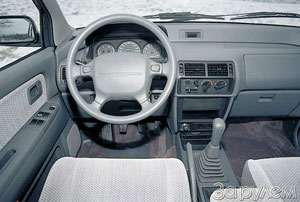 Let's see what is similar and in what different relatives are inside. Settling in Mitsubishi, you habitually sink on the seat. You move in the Honda chair almost from the side. There is no inconvenience here, you just immediately realize - this car will be more. Yes, and doors, the size of a gate, open the openings, which can be included even along, at least across.
Let's see what is similar and in what different relatives are inside. Settling in Mitsubishi, you habitually sink on the seat. You move in the Honda chair almost from the side. There is no inconvenience here, you just immediately realize - this car will be more. Yes, and doors, the size of a gate, open the openings, which can be included even along, at least across. The difference is felt inside. In the spaces of Wagon, despite a slightly more vertical landing, a high roof and a third row of seats, you still feel like in a passenger car: doors above the floor level, in the middle - a tunnel.
Although Mitsubishi is more compact, passengers of the second row will not feel embarrassed: their knees do not reach the front seats, ten centimeters above their heads, three in the shoulders does not press. You can recognize the third row with a full -fledged place for two passengers only with reservations - it is convenient for children there. Adults will have to sit, pulling his knees to the chin. Nevertheless, even here there are drawers for trifles, ashtrays, a split back with head restraints adjustable along the angle of inclination and, of course, seat belts.
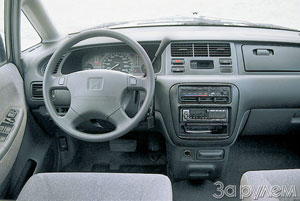 Honda shuttle is perceived differently inside. The point here is not only in the size of a spacious salon with even, without a tunnel, floor, but also in its layout. After all, the first two rows are formed by separate chairs, and along the passage between them you can freely pass even during movement. However, there is an option with a three -seater split (50:50) average sofa. There are almost the same place in the third row as in front - two passengers, even a decent complexion, will be quite convenient from behind.
Honda shuttle is perceived differently inside. The point here is not only in the size of a spacious salon with even, without a tunnel, floor, but also in its layout. After all, the first two rows are formed by separate chairs, and along the passage between them you can freely pass even during movement. However, there is an option with a three -seater split (50:50) average sofa. There are almost the same place in the third row as in front - two passengers, even a decent complexion, will be quite convenient from behind. If the night overtook you on the way - it doesn’t matter, in both cars you can, decomposing the second and third rows, get comfortable, spacious roostering. However, in machines of this type, the salon, as a rule, has a lot of transformation options.
With the maximum number of passengers of the place in the luggage compartment of Wagon - except for a pair of small bags. The cargo capacity can be increased by folding half the back or the entire third row of seats. True, in this position, the seats take up a lot of space. In the cargo version of the middle of the middle row, they are simply placed on pillows - it turns out a raising forward platform.
The trunk of Shattla is more deeper, moreover, deep as a basement - a doctae is not under the floor, but in the cabin. The third row is originally cleaned: it is overturning back and completely hids into this basement - as it was not! In the mid -row chairs, you can not only fold the backs, but also throw the seats 90 forward. If necessary, they are generally dismantled - literally in one movement of the hand.
DRIVER'S SEAT
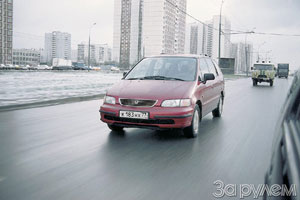 Sitting behind the wheel of Space Wagon, you immediately feel at ease. Landing is quite dense, as in a passenger car. The chair is comfortable, deep, the height of the front and posterior edges of the pillow is regulated. All adjustments are best done with an open door - is also familiar. There are no issues to the main management bodies - everything is in order. Of the secondary ones, the heating and ventilation control panel with switches of different sizes and three stingy icons is not entirely convenient. The headlight level regulator went far down. Yes, and the placement of control of electric grinders on the floor tunnel, it seems, is not the best.
Sitting behind the wheel of Space Wagon, you immediately feel at ease. Landing is quite dense, as in a passenger car. The chair is comfortable, deep, the height of the front and posterior edges of the pillow is regulated. All adjustments are best done with an open door - is also familiar. There are no issues to the main management bodies - everything is in order. Of the secondary ones, the heating and ventilation control panel with switches of different sizes and three stingy icons is not entirely convenient. The headlight level regulator went far down. Yes, and the placement of control of electric grinders on the floor tunnel, it seems, is not the best. Now let's move to Honda Shattle. Yes, here is exactly on the bus, even the passage between the seats. The two-story front panel looks very thoroughly, and the lower edge of the windshield is generally lost somewhere in the distance. But in front of him is still a good meter of the hood! Well, okay, emotions to the side ...
The salon looks very American: spacious, with soft, wide armchairs. The automatic gear selector located on the steering wheel only enhances this impression. There is no tachometer - it is logical, with a machine gun it is useless. The chair and steering wheel, two eirbegs, air conditioning, electric drives of glasses, mirrors and hatch, the central castle are the same as in Mitsubishi. Around - many large and small boxes and pockets for small things.
IN MOVE
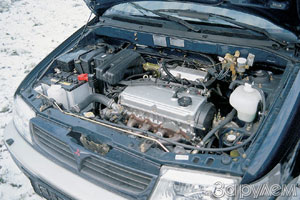 A powerful traction engine, easily gaining 6500 rpm, a mechanical gearbox with a clear switch, quite acute steering, familiar dimensions, a good overview encourage the Wagon Space driver for dynamic driving. (But there are also modifications with a 230 -liter engine.!) In the cabin quietly, only when acceleration is the engine votes. But his sound is more pleasant than annoying. Although Mitsubishi is a high car, in corners it is no more fucked than a regular passenger. The suspension is quite a hard and unloaded car noticeably shocks on irregularities.
A powerful traction engine, easily gaining 6500 rpm, a mechanical gearbox with a clear switch, quite acute steering, familiar dimensions, a good overview encourage the Wagon Space driver for dynamic driving. (But there are also modifications with a 230 -liter engine.!) In the cabin quietly, only when acceleration is the engine votes. But his sound is more pleasant than annoying. Although Mitsubishi is a high car, in corners it is no more fucked than a regular passenger. The suspension is quite a hard and unloaded car noticeably shocks on irregularities. Shattle, if necessary, can also be spurred, but there is no desire to do it - it is unsolvable somehow. I would like to rush, as if in an express, not condescending to such vain trifles as shifting gears. Large (fifteen -inch) wheels make the car not too demanding on the quality of the road surface - it simply does not notice small potholes. On larger Honda, it only sways smoothly. Minus soft suspension - tangible rolls in corners. The steering hydraulic power steering performs the lion's share of the work as the driver and deprives the control of sharpness - perhaps it is not for a mini -van and use.
Operation, service
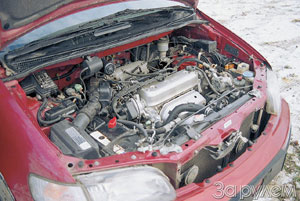 Both Mitsubishi and Honda give a standard guarantee for their cars - one year without limiting a run. But the first company has five hundred in Russia, of which there are two in Moscow, and the second, respectively, two and one. The cost of a norm -hour is $ 55 and $ 50. The owner of Space Wagon will have to attend the service every 10 thousand km. For shuttle, in principle, the same frequency is provided, but only under normal operating conditions. But in the abnormal ones, which are understood as frequent short trips, driving in hot weather, traffic in traffic jams and on salty winter roads, the mileage between oil shifts is halved. Unfortunately, in the capital, all these abnormalities are the very norm.
Both Mitsubishi and Honda give a standard guarantee for their cars - one year without limiting a run. But the first company has five hundred in Russia, of which there are two in Moscow, and the second, respectively, two and one. The cost of a norm -hour is $ 55 and $ 50. The owner of Space Wagon will have to attend the service every 10 thousand km. For shuttle, in principle, the same frequency is provided, but only under normal operating conditions. But in the abnormal ones, which are understood as frequent short trips, driving in hot weather, traffic in traffic jams and on salty winter roads, the mileage between oil shifts is halved. Unfortunately, in the capital, all these abnormalities are the very norm. Both cars consume 95th gasoline, but in its absence they can work on the 92nd. As a spare wheel, both of them are a doctrine - for the city, it is acceptable. But such cars are intended for travel. And behind the MKAD line, a full-size reserve is still preferable.
The editors thanks the company Diamant and Aoyam Motors for the cars provided for the test.
Mitsubishi Spaces Vagon 2.0.
Honda Shuttle 2.2.
The front panel of Mitsubishi elusively resembles the eight.
An extensive two -story, with two glove compartment, the front panel of Honda is in size on the dining table.
Technical characteristics of the Mitsubishi-Pace Vagon car
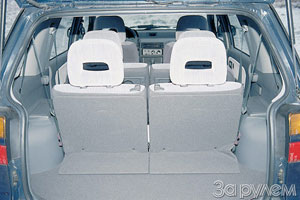 General data: number of places - 7; Equipped mass - 1295 kg; Full mass - 1980 kg; maximum speed - 185 km/h; acceleration time from a place to 100 km/h - 11.2 s; fuel consumption at 90, 120 km/h and Hz - 7.1; 9.5; 10.7 l/100 km; fuel supply - 60 liters; Fuel is unhealthy gasoline AI-95 (say AI-92). Dimensions, mm: length - 4515; width - 1695; height - 1580; base - 2720; The track in front/back - 1460/1460; Road clearance - 120; The turning radius is 5.9 m. The engine: four -cylinder in a row, with four valves on the cylinder, is located in front of the front; working volume - 1997 cm; cylinder diameter and piston stroke - 85.0x88.0; compression degree - 10.0; Power - 98 kW/133 liters. With. at 6000 rpm; The maximum torque is 176 NM at 4750 rpm. Transmission: front wheel drive; gearbox - five -speed mechanical; Transporting numbers: I - 3.14; II - 1.83; III - 1.24; IV - 0.89; V - 0.73; h. X. - 3.17; The main program is 4.59 (4.91). Suspension: independent with stabilizers of the anti -resistance stability; front - type McExeson; The back is on single longitudinal levers, collected on the subframe. Brakes: hydraulic with a vacuum amplifier and ABS; front - circular ventilated; The rear is drum. Steering: rheck with a hydraulic wrap. Tire size: 185/70 R14.
General data: number of places - 7; Equipped mass - 1295 kg; Full mass - 1980 kg; maximum speed - 185 km/h; acceleration time from a place to 100 km/h - 11.2 s; fuel consumption at 90, 120 km/h and Hz - 7.1; 9.5; 10.7 l/100 km; fuel supply - 60 liters; Fuel is unhealthy gasoline AI-95 (say AI-92). Dimensions, mm: length - 4515; width - 1695; height - 1580; base - 2720; The track in front/back - 1460/1460; Road clearance - 120; The turning radius is 5.9 m. The engine: four -cylinder in a row, with four valves on the cylinder, is located in front of the front; working volume - 1997 cm; cylinder diameter and piston stroke - 85.0x88.0; compression degree - 10.0; Power - 98 kW/133 liters. With. at 6000 rpm; The maximum torque is 176 NM at 4750 rpm. Transmission: front wheel drive; gearbox - five -speed mechanical; Transporting numbers: I - 3.14; II - 1.83; III - 1.24; IV - 0.89; V - 0.73; h. X. - 3.17; The main program is 4.59 (4.91). Suspension: independent with stabilizers of the anti -resistance stability; front - type McExeson; The back is on single longitudinal levers, collected on the subframe. Brakes: hydraulic with a vacuum amplifier and ABS; front - circular ventilated; The rear is drum. Steering: rheck with a hydraulic wrap. Tire size: 185/70 R14. + Large passenger capacity, passenger size, powerful motor, acute steering, say 92nd gasoline.
- A tight third row of seats, a small trunk, folded seats are not compact enough, an uneven floor, a narrow reserve, and an inapplicable gasoline.
Technical characteristics of the Honda-Shattle car 2.2
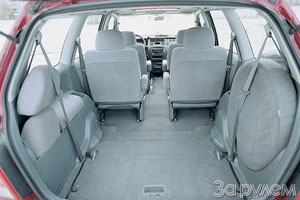 General data: number of places - 6 (7); Equipped mass - 1470 kg; Full mass - 2250 kg; maximum speed - 185 km/h; acceleration time from a place to 100 km/h - 12.2 s; fuel consumption in conditional suburban and city cycles - 8.0; 13.0 l/100 km; fuel supply - 65 liters; Fuel is unhealthy gasoline AI-95 (say AI-92). Dimensions, mm: length - 4750; width - 1770; height - 1640; base - 2830; The track in front/back - 1525/1545; Road clearance - 160; The turning radius is 4.9 m. The engine: four -cylinder in a row, with four valves on the cylinder and two balancer shafts, is located in front of the front; working volume - 2156 cm; cylinder diameter and piston stroke - 85.0x95.0; compression degree - 8.8; Power - 107 kW/145 liters. With. at 5600 rpm; Maximum torque - 196 NM at 4600 rpm. Transmission: front wheel drive; gearbox - four -speed automatic; Transporting numbers: I - 2.74; II - 1.57; III - 1.08; IV - 0.73; h. X. - 2.05; The main program is 4.43. Suspension: independent with stabilizers of the anti -resistance stability, collected on subframes; The front - double, transverse transverse levers at a spring -loaded rack, the back is multi -link. Brakes: hydraulic disk with a vacuum amplifier and ABS; Front - ventilated. Steering: rheck with a hydraulic wrap. Tire size: 205/65 R15.
General data: number of places - 6 (7); Equipped mass - 1470 kg; Full mass - 2250 kg; maximum speed - 185 km/h; acceleration time from a place to 100 km/h - 12.2 s; fuel consumption in conditional suburban and city cycles - 8.0; 13.0 l/100 km; fuel supply - 65 liters; Fuel is unhealthy gasoline AI-95 (say AI-92). Dimensions, mm: length - 4750; width - 1770; height - 1640; base - 2830; The track in front/back - 1525/1545; Road clearance - 160; The turning radius is 4.9 m. The engine: four -cylinder in a row, with four valves on the cylinder and two balancer shafts, is located in front of the front; working volume - 2156 cm; cylinder diameter and piston stroke - 85.0x95.0; compression degree - 8.8; Power - 107 kW/145 liters. With. at 5600 rpm; Maximum torque - 196 NM at 4600 rpm. Transmission: front wheel drive; gearbox - four -speed automatic; Transporting numbers: I - 2.74; II - 1.57; III - 1.08; IV - 0.73; h. X. - 2.05; The main program is 4.43. Suspension: independent with stabilizers of the anti -resistance stability, collected on subframes; The front - double, transverse transverse levers at a spring -loaded rack, the back is multi -link. Brakes: hydraulic disk with a vacuum amplifier and ABS; Front - ventilated. Steering: rheck with a hydraulic wrap. Tire size: 205/65 R15. + A spacious salon with a passage in the middle, wide doorways, a full-fledged third row of seats and a witty principle of its folding, a large trunk, let's say 92nd gasoline.
- Invisible the edge of the hood, a doctrine in the cabin, a small mileage between oil changes, a high fuel consumption, and ethyled gasoline is not applicable, there is no choice of engines and gearboxes.
SUMMARY
Despite the external resemblance, Mitsubishi Space Wagon and Honda Shuttle are different. At the first, you can go to work all week, and in the weekend, plunging a family, a dog, food and equipment, go to nature. The second one looks more natural near the office of the company, with a dormant driver. A private trader can also opt for a shuttle, but this requires several conditions: commitment to mini -wenes, love for travels (better - both), the presence of a large family and the lack of need to wander every day (possibly for this The goals already have a more compact machine).
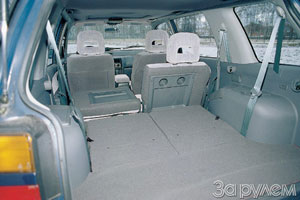
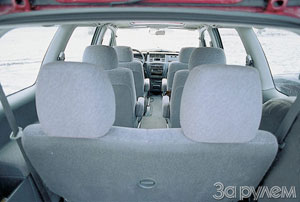
Yuri Nechetov.
Photo by Sergey Ivanov
Source: The magazine "Driving"





